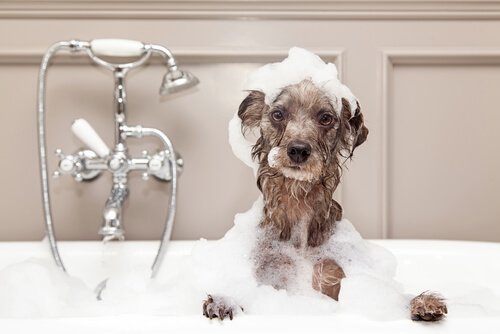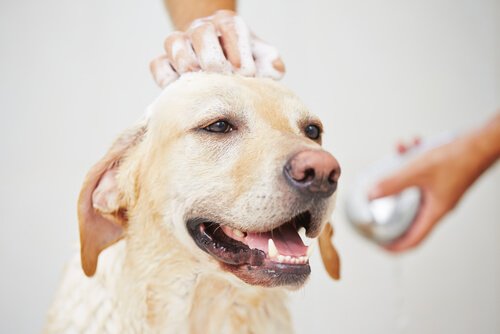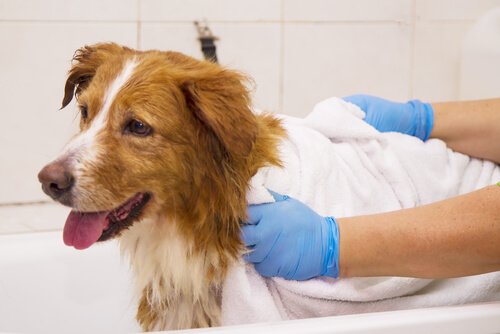How to Give a Dog a Bath in the Winter

In summer, it’s much easier to give your dog a bath because it helps them cool down. However, bathing in the winter can be a more complicated task. You must be very careful not to get him sick! Continue reading this article to find out why.
Tips for giving your dog a bath in the winter
Like people, animals feel the cold even if they have a protective layer of fur and sometimes it’s necessary for owners to buy them clothes. However, that doesn’t mean that they stop stinking in winter and there’s no need to bathe them.
It’s easier for them to get dirty due to coming back home after a walk on a rainy day or walking through a mud puddle… and, of course, you can’t forget the fact that pets are inside for a longer time, and it seems like their aroma permeates everything in the house.
Giving a dog a bath in the winter is the complete opposite of doing it in the summer because during the summer it can be a pleasant, refreshing and fun activity. Below you can read some tips so that your pet remains clean during the winter season:
1. Don’t bathe them that much
It’s not a good idea to bathe your dog every week because they won’t be able to produce their own scent — which they use to communicate with other pets — and their fur can lose certain properties due to not having any oils.
Even in summer, you should avoid giving your pet baths on a weekly basis. In the winter, it will be better to give them a bath only once a month, especially if they spend all day inside.
2. Give them quick baths
‘Express’ baths are recommended when it is cold, since, this way, we remove the majority of dirt from the animal and keep him from getting sick. Do not spend an hour lathering up your pet: leave that for the summer.

3. Use warm water
Even when it is hot outside, it’s not recommended to bathe your dog with cold water because it’s not good for the animal’s health. When bathing a dog in the winter, it would be better to make the water a little warmer. This way, they will enjoy the bath and not get cold. However, you should be careful not to burn them!
4. Bathe them inside the house
Although it’s a somewhat crazy idea, the truth is that it will prevent several problems. Bathing your dog in the shower with a large or medium-sized dog — like a Labrador or a Boxer — in the kitchen or in the laundry room if you have a small breed — like a Chihuahua, a Wiener Dog or a French Bulldog — will keep them from catching a cold.
Of course, when you finish bathing them, you will have to thoroughly clean the tub and sink by removing the hairs and all the dirt left behind by the pet.
5. Dry them very well
Once you have finished bathing your dog, let them “dry off” or “shake off” the water. Try to have this happen in a place that can get wet, such as a bathroom or laundry room.

In order to prevent them from getting everything wet, it’s a good idea to wrap them in a towel for a few minutes. By doing so, you will remove any excess water. However, you should remember that your dog will still try to get rid of the moisture!
We recommend that you use a blow dryer to dry them completely. Make sure the air is not too hot so you won’t burn their skin. That way you will not only prevent health problems such as pneumonia but also the appearance of fungi due to moisture.
6. Choose a sunny day
Besides bathing your dog indoors, it’s best to do so on a day when the sun is out. It’s best to clean them at noon so they can lie down for a while in the sun and finish drying on their own. That way they will not feel so cold after the shower!
Finally, you have the option of taking them to the groomer, which is a pet beauty salon. Likewise, you can keep them clean by using powders that are placed on top of the animal and spread with a brush!